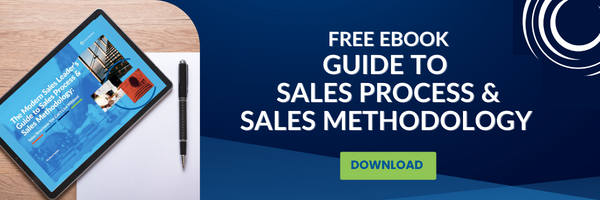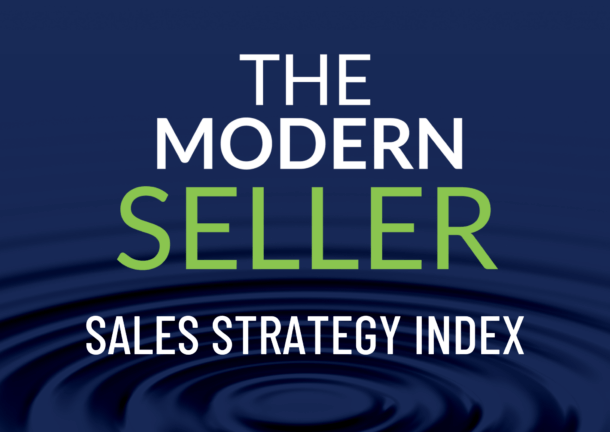"*" indicates required fields
Struggling with decision-making in sales growth? This article dives deep into the impacts of ambiguity and certainty on performance. Too much ambiguity leads to indecision, while too much certainty creates a rut. Learn tangible examples and how CEOs can foster a culture of innovation. Don’t let uncertainty stall your progress or complacency hinder your success.
*******
One of my mentors, Alan Weiss, recently shared this thought with my mastermind group:
There are two things that impede decision making. The first is too much ambiguity; that leads to indecision. The second is too much certainty; that leads to a rut.
I continually see this play out with sales growth strategy and overall sales performance. This article offers ways for CEOs and sales leaders to avoid these two extremes and keep momentum with sales growth.
How Does Too Much Ambiguity Impede Sales Growth and Performance?
Too much ambiguity feels like the obvious one. When leaders are faced with many decisions, or they are faced with decisions of great significance, too much ambiguity leads to a lack of confidence. The result is delayed decision making, until more information comes to light that leads toward a particular direction.
Usually what I observe in those situations is that more information becomes confused with more confidence. But the “perfect information” never arrives. That’s why indecisive organizations find themselves stuck in a vicious loop. The challenge they aimed to solve continues to persist and become even more problematic years later.
What are tangible examples of ambiguity impeding sales growth?
- Too many target markets and solution offerings make it unclear for sales teams. They then focus on the wrong prospects or miss opportunities to grow existing customers. This slows down your sales growth or leads to unprofitable sales.
- Too much territory assigned to one sales professional makes it exponentially difficult to grow the territory in meaningful way. This leads to lack of traction and competitors gaining market share.
- Ambiguity in the sales compensation plan distracts sales professionals from selling because they’re unclear on how they will be paid. That distraction slows down sales and can foster distrust in the organization.
How Does Too Much Certainty Impede Sales Growth and Performance?
Too much certainty has some layers to it. Certainty breeds confidence, and confidence is good for decision making. But when leaders have a good thing going, when things are humming along, there’s no urgency to innovate or look at the situation in a different light. That good thing ultimately wears itself into a rut.
A rut gets deeper and deeper until you can no longer move through it. The rut slows you down or stops you. Your competitors pass you, and now you need to climb out of the rut of “it was once good” and forge a new path.
What are tangible examples of too much certainty impeding sales growth?
- Taking the same approach to sales strategy that worked five years ago. If you haven’t reviewed your sales strategy in the last 12 months, it’s time. If you don’t have a formal sales strategy designed, it’s also time. If you aren’t setting and monitoring your sales strategy, you can’t expect anyone else to lead those efforts.
- Disregarding left-field competition. If you look at your competitors of today, chances are good they weren’t here a decade ago. Competition is coming from unlikely places. Examples include: traditional CPA firms branching into disciplines like HR or information technology, the hotel industry competing with companies like Airbnb, and traditional office spaces losing ground to better designed and more economical co-working spaces.
- Assuming your customers’ buying habits are the same and that they’ll remain loyal. In research conducted by Hinge Marketing, they found that 26.1% of your client base is at least considering a switch to a new solution provider. This is a good reminder to not allow a satisfied customer to get into a “loyalty rut.”
How can CEOs and Sales Leadership Teams Think Differently?
- Actively and consistently challenge your thinking. Even simple questions can spark new ways of thinking. Questions like: Am I waiting for more information before deciding? Am I making assumptions based on certainty?
- Stay well read on trends globally and within your industry. Use these trends to bring one new idea to clients and prospects this quarter. This will lead to new conversations and new conversations lead to new opportunities.
- Review and freshen your investments in structures like sales process, sales methodology, and sales technology. Review an implemented sales strategy at least quarterly. If you’re designing a fresh sales strategy or updating a current plan, review monthly.
- Ask your top performers and best clients to provide you with their perspectives. Learning from your best keeps engagement and loyalty alive and growing. They can also provide you with perspectives that speed decision making and prevent ruts.
You can’t predict every external disruption that will impede sales growth. But you can mitigate the two internal extremes of too much ambiguity and too much certainty. These ideas can assist you as a CEO or sales leader to coach your teams with decision making in the face of ambiguity, and also prevent too much certainty from creating complacence.
Would you like to improve sales performance and accelerate your sales growth?
Don’t let your competition get an advantage. I can help. If you want to know how to improve your sales growth strategy, or you’d like an outside perspective, let’s talk. Contact me to schedule a conversation.



 Our Strategic Selling signature sales training program is now available online. This online sales learning program is ideal for professional services and B2B sales. Get started with 2 free lessons.
Our Strategic Selling signature sales training program is now available online. This online sales learning program is ideal for professional services and B2B sales. Get started with 2 free lessons.